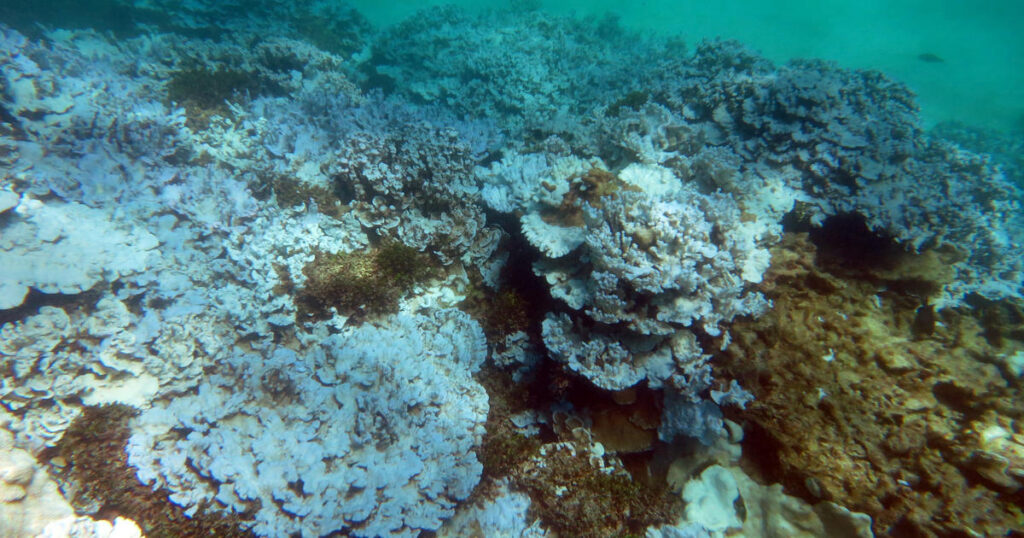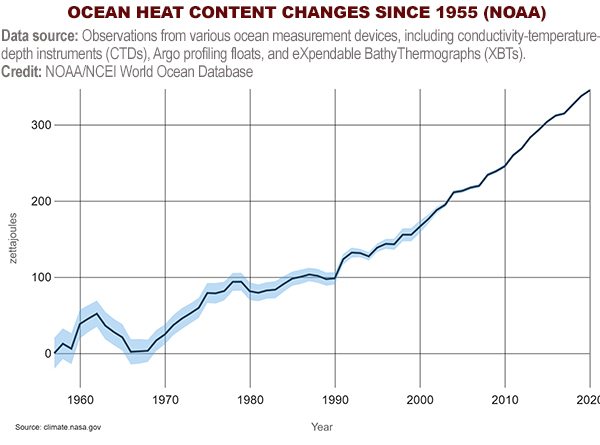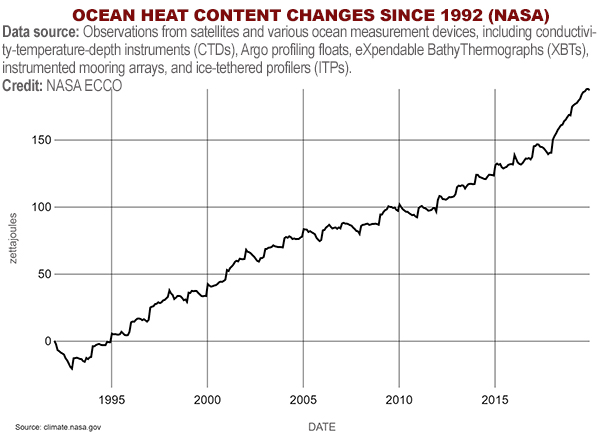Frightening rise in temperatures:
For four years in row, ocean temperatures broke the previous year’s all-time record. A team of international scientists belonging to 16 institutes from across the world found that five of the hottest years were recorded during the last six years and the rate of warming is increasing. This is a worrying trend. The oceans cover 70% of the earth’s surface and whatever happens there is going to massively impact what happens everywhere else. The team that studied the issue puts it rather brutally “The state of our oceans can measure the world’s health, and judging by the updated oceanic observations … we need a doctor”.
With the world emerging from a three year break due to La Niña (This is El Niño’s cooler counterpart), temperatures started climbing in March 2023 and went off the charts in April before falling somewhat.Gregory C. Johnson, an oceanographer at the National Oceanic and Atmospheric Administration says “It’s a little bit like we’ve had the freezer door open for a while and it’s helped to cool the planet, but even while that freezer has been open, background temperatures have continued to rise. Now the freezer is closed, everything is hotter than before”.

Coral bleaching has spread across the planet’s oceans due to anthropogenic climate change among other factors
The 2/10th of a degree higher than previous may not look like much but one must understand the sheer amount of energy required to heat such a huge volume of water. Scientists are still trying to figure out what factors are at play with some saying it could be the start of a new trend while others say that they should be expected

CHART 1: OCEAN HEAT CONTENT CHANGES SINCE 1955 (NOAA)
as an alarming indication of the impact of Anthropogenic Climate Change (ACC).
However, despite the requirement to understand the phenomenon better, everyone knows that with such changes marine life will be killed, coral reefs bleached, sea levels risen and the planet heated even faster.
The ocean has continued to heat up for the last 67 years:
In that context, NASA, in a 2020 report says that 90% of global warming is happening in the oceans causing the water’s internal heat to increase. To put it simply, that means that 90% of the heat from human-induced global warming is contained in the oceans. Since 1955 when modern record keeping began, ocean water temperature has increased by 345 (± 2) zettajoules.
Each data point in chart 1 represents a five-year average. For example, the 2020 value represents the average change in ocean heat content (since 1955) for the years 2018 up to and including 2022.
Chart 2 tracks monthly changes in ocean heat content for the entire water column (i.e. from the top to the bottom of the ocean) from 1992 to 2

CHART 2: OCEAN HEAT CONTENT CHANGES SINCE 1992 (NASA)
019, integrating observations from satellites, in-water instruments, and computer models. Both charts are expressed in zettajoules.
Both charts show the steep rise in both the heat and the depth heat profile of our oceans and this is a very concerning indicator that we certainly do need a doctor.
Heat stored in the ocean causes its water to expand, which is responsible for one-third to one-half of global sea level rise. Most of the added energy is stored at the surface, at a depth of zero to 700 meters. The last 10 years were the ocean’s warmest decade since at least the 1800s. The year 2022 was the ocean’s warmest recorded year and saw the highest global sea level.
What can we do about it?
The question that has been asked for years and never answered must continue to be asked but now with increasing urgency. The most important factor that must be considered here is that if we keep the oceans safe, we keep the planet safe. This means that at the very least, 90% of our efforts to curb human induced climate change must be targeted at reducing ocean temperatures. We can do this on land certainly, but we must also make sure that creating a sustainable, climate friendly blue economy gets priority status in our efforts to treat our oceans and cure them of the grave ills that beset them.






